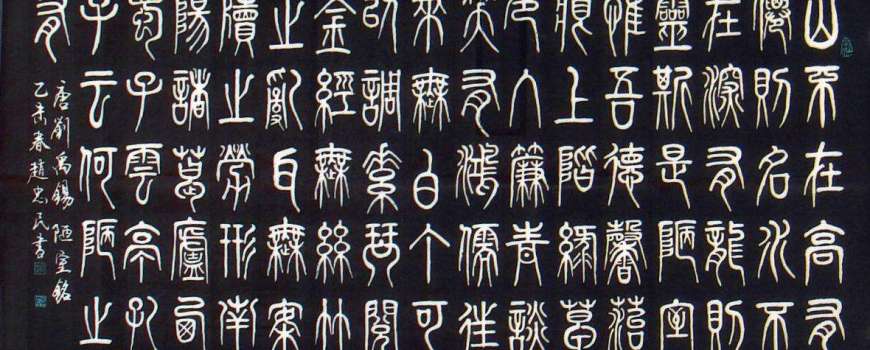To better understand Chinese characters, we can trace them back to their source in 小篆 (Xiǎozhuàn) calligraphy. 小篆 (Xiǎozhuàn) means ‘small seal’ and is a form of Chinese writing that dates from the Qin Dynasty (221B.C.-206B.C.).
秦始皇 (qín shǐ huáng) was the founder of the Qin Dynasty. He unified the Seven Warring States and created the first Chinese empire. His minister 李斯 (lǐ sī) combined the text of the seven states to develop a common language, which is Xiǎozhuàn.
Since the Xiǎozhuàn characters often look more like pictures of the things that they represent, it can be useful and fun to see how modern characters evolved from them. (Modern scientific studies on memory and language learning show that stories and pictures are among the best ways to remember words.)
女 (nǚ) ‘woman’

The character in the picture above is 女 (nǚ). The Xiǎozhuàn version looks like the posture of a woman on her knees. In earlier times, the social status of Chinese women was low, and they were required to kneel down to their parents, brothers, husbands, and their husband’s parents. So this kneeling down posture became associated with women.
人 (rén) ‘human being’

This character is 人 (rén). In ancient times, only slaves were called rén, while upper class people were called 君 (jūn) ,臣 (chén) , or 大夫 (dài fū). So the rén character was a man on his knees with hands touching the ground. But now rén is 人, which is a person standing up. I think this change signifies that all human beings have dignity and value.
大 (dà) ‘big’

The Xiǎozhuàn version of 大 (dà) is the 人 (rén) character with his shoulders lifted up, standing up with two legs spread, which aims at showing his power. He looks like an old Western gunfighter ready to draw and shoot. But the modern character looks like a man with arms outstretched, ready to give you a big hug.
天 (tiān) ‘heaven’

The Xiǎozhuàn version of tiān 天 (tiān) is the character 大 (dà) with an additional line on the top. It refers to the things that are above human beings. I like to think of it this way: even a big man is not bigger than heaven.
To see more examples of small seal and pictograph characters, take a look at Anna’s book, Chinese Character Stories: A Fun, Easy Way to Learn and Remember Chinese Characters.
If you have your own ways to remember characters, you can share them with us on each page of the Online Dictionary. You can draw pictures, write stories, or amusing ways you remember a character. Just head over to a page of the Online Dictionary by clicking on the red links in the article and share your ideas!
